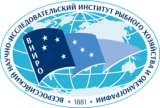QR-код документа
Article
Т 65
Травина, Т.Н.
К вопросу о питании девятииглой колюшки Pungitus pungitius в нижнем течении р. Большая в 2007-2008 гг. [Электронный ресурс] = To the question about the feeding by ninespine stickleback Pungitus pungitius in the low part of the Bolshaya River in 2007-2008 / Травина, Т.Н., Ярош, Н.В. // Исследования водных биологических ресурсов Камчатки и северо-западной части Тихого океана: Сб. научных трудов. Вып. 15/КамчатНИРО. Петропавловск-Камчатский. 2009. 88-93 с./Research of water biological resources of Kamchatka and of the northwest part of Pacific Ocean: Selected Papers. Vol. 15/KamchatNIRO. Petropavlovsk-Kamchatski. 2009. 88-93 p. - 2009
Рубрики: Crustaceans
Stickleback
Feeding
Bolshaya River
Chironomids
Size
Аннотация: Численность девятииглой колюшки в неводных обловах в 2007-2008 гг. была невысокой. По сравнению с предыдущими годами исследования. молодь Pungitus pungitius была крупнее. Наиболее активно колюшка питалась в летний период, а осенью, также как и у других видов рыб, интенсивность потребления пищи уменьшалась. Рыбы с пустыми желудками встречались в пробах редко, и их доля не превышала 8%. Обеспеченность их пищей в 2007-2008 гг. была достаточно высокой. В летний период в пище девятииглой колюшки преобладали личинки хирономид, а осенью - ракообразные и олигохеты. Выявлены различия среди колюшек разного размера по составу пищи./The abundance of ninespine stickleback Pungitus pungitius in the trap-net catches in 2007-2008 was not high. Juvenile individuals, comparing them to those in the previous years of studying, were larger. Ninespine stickleback demonstrated the most intense feeding in summer, whereas in the fall season this species similar to the other fish species consumed less food. Empty-stomached individuals were met in the samples rarely, their part did not exceed 8%. The food supply in 2007-2008 was rather high. In summer the dominance in the food of ninespine stickleback was larval chironomids, in the fall season - crustaceans and oligochaete worms. Food composition differences have found among stickleback individuals of different size.
Доп.точки доступа:
Ярош, Н.В.
